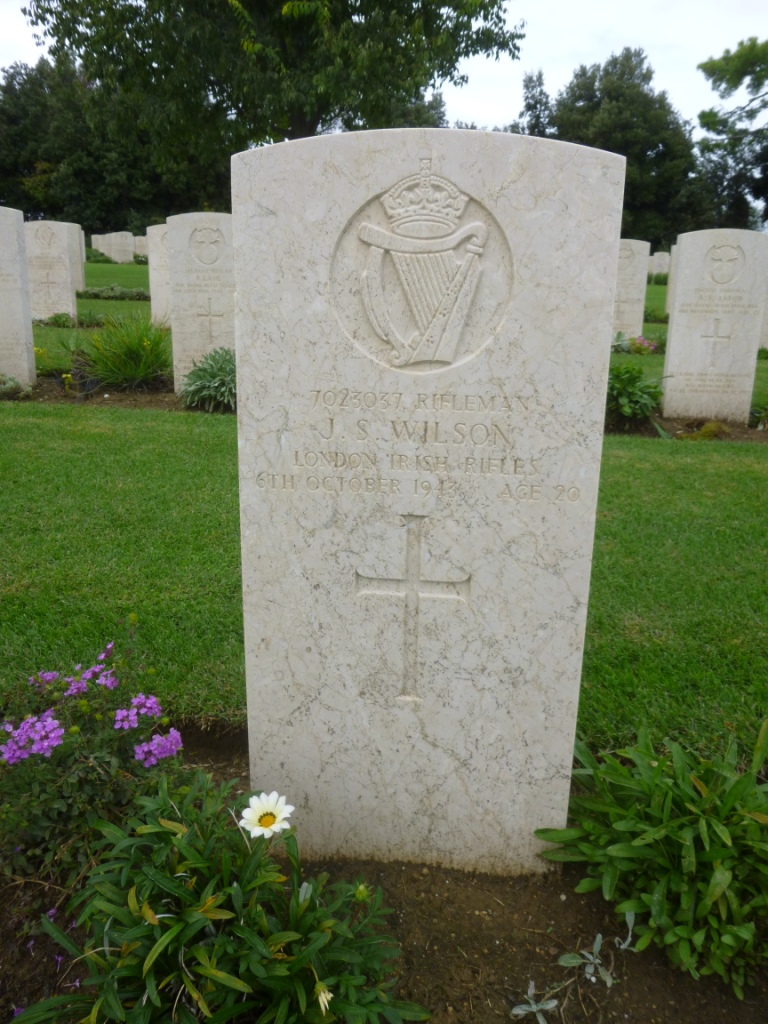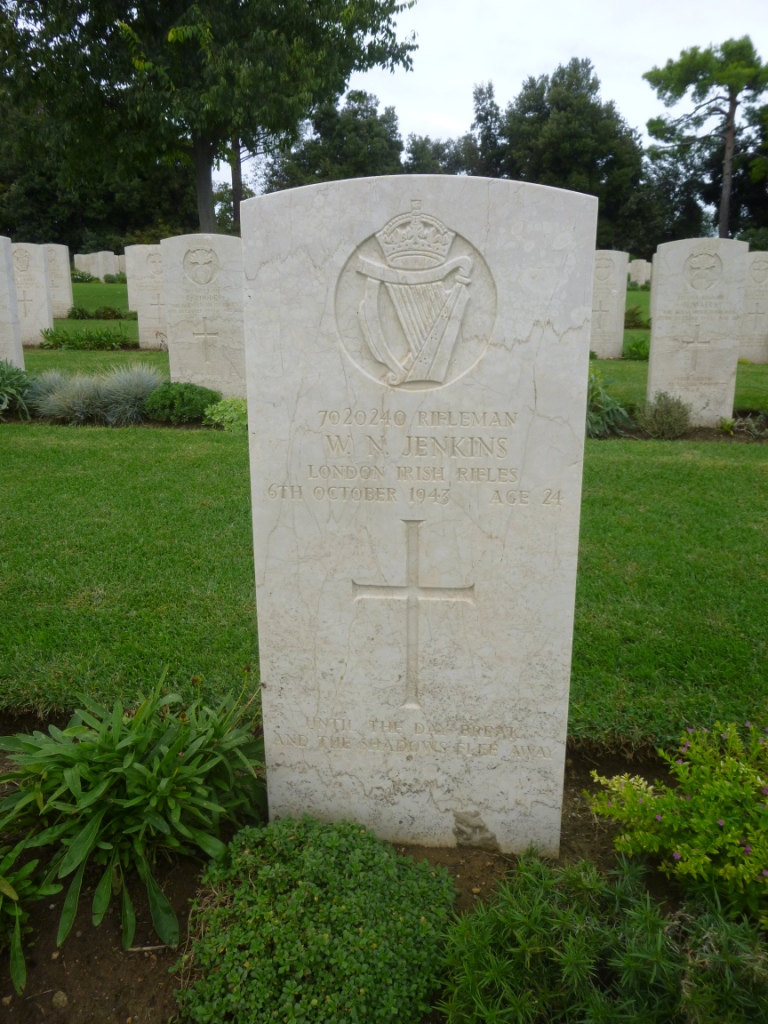We have been contacted by David Jenkins, the nephew of William Jenkins who served with the 2nd Battalion (2 LIR) in Tunisia and Italy during the Second World War. In a moving note, David told us:
“I have been meaning to contact you for a while now in relation to my uncle, Rifleman William Norman Jenkins, No. 7020240 and his friend Rifleman John Slater Wilson, No. 7023037, who were both killed by the same German shell at Termoli on 6th October 1943.
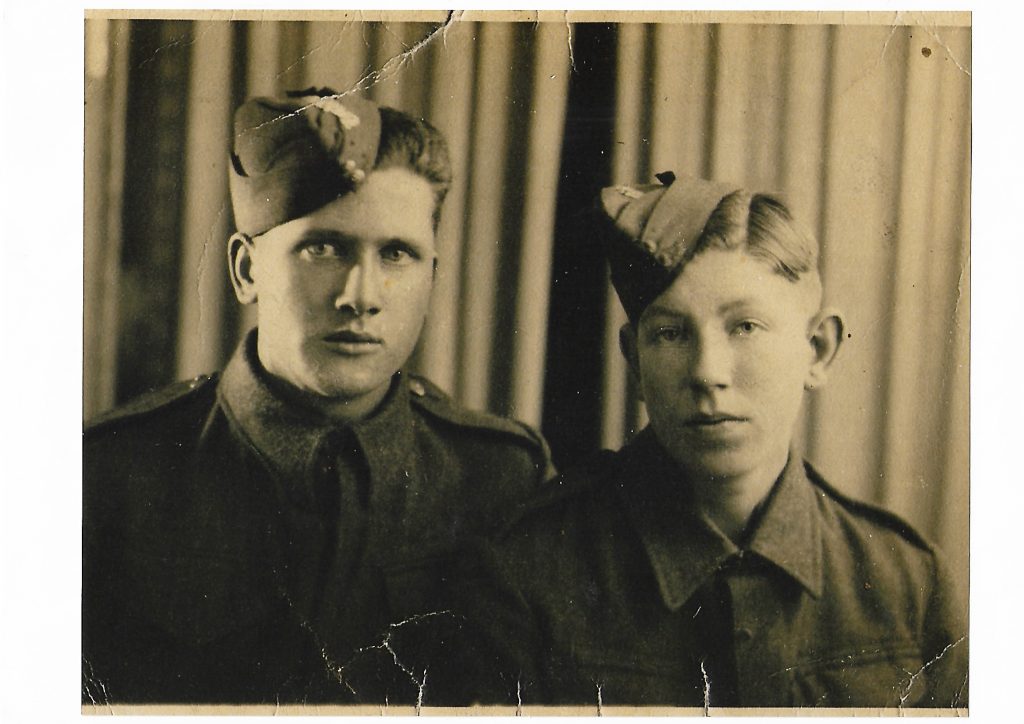
Major Phillips from G Company sent a letter dated 5th February 1944, to my grandmother detailing how William and his friend John were killed. Here are extracts taken from that letter:
Unfortunately I was myself wounded shortly afterwards and have only recently returned from hospital. The circumstances of your son’s death are as follows – he was digging a slit trench with his friend, a lad named Wilson, in which to shelter from fairly heavy shelling which was going on, when a German shell landed right between them, killing them both instantly. He was well liked in the company and his death is regretted by all of us.
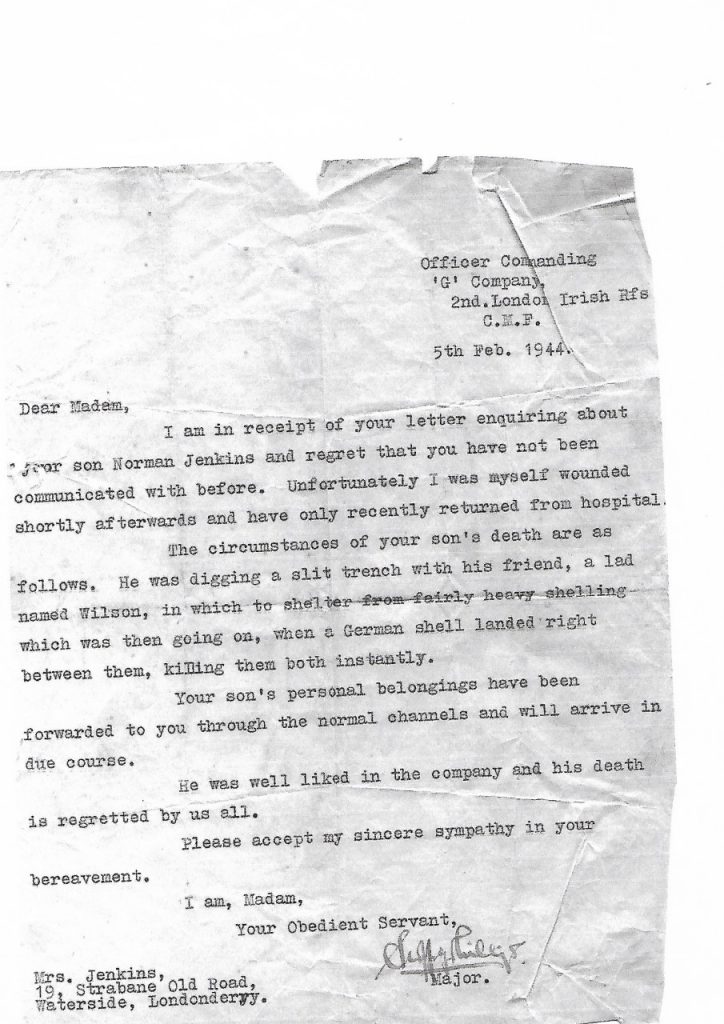
William’s remains were then taken for burial to the Public Garden off Main Street near the Central Cemetery in Termoli. At a later date, he was then removed for burial to Sangro River Military Cemetery where he and John Wilson are buried beside each other.
William Jenkins was born in Londonderry on 3rd December 1919 and had two brothers and three sisters. His father, Samuel Jenkins, was one of eight brothers who had fought during the Great War. Samuel had served with the 6th Inniskillings at Gallipoli and Salonika where he came down with malaria but would recover and go onto serve with the Labour Corps in France. During the Second World War, he served in the Royal Fusiliers with the BEF in France and was rescued off the French coast 10 days after the last man had been lifted off Dunkirk. Following this, he served with the Queens Own West Kent Regiment Home Guard in Kent. In July 1941, Samuel and his company were billeted in a castle when he got up during the middle of the night, opened a cellar door and fell down a flight of stone steps. He was taken to hospital with concussion but died of his injuries the following day.
By then, William had joined the 7th Bn Royal Ulster Rifles – on 21st October 1940 in Londonderry, where he had been an Apprentice Baker. His records state that he was posted to 2 LIR on 29th August 1942 when they were located at Cumnock in Ayrshire. The records state that he embarked from Glasgow on 11th November 1942 and disembarked at Algiers on the 22nd. On 19th April 1943, when the battalion were positioned north of Medjez-el-Bab in Tunisia, William suffered a wound to his left thigh and was taken to the 95th General Hospital B.N.A.F., where he wrote a letter home stating that ‘there was no need to worry as his leg was healing well’.
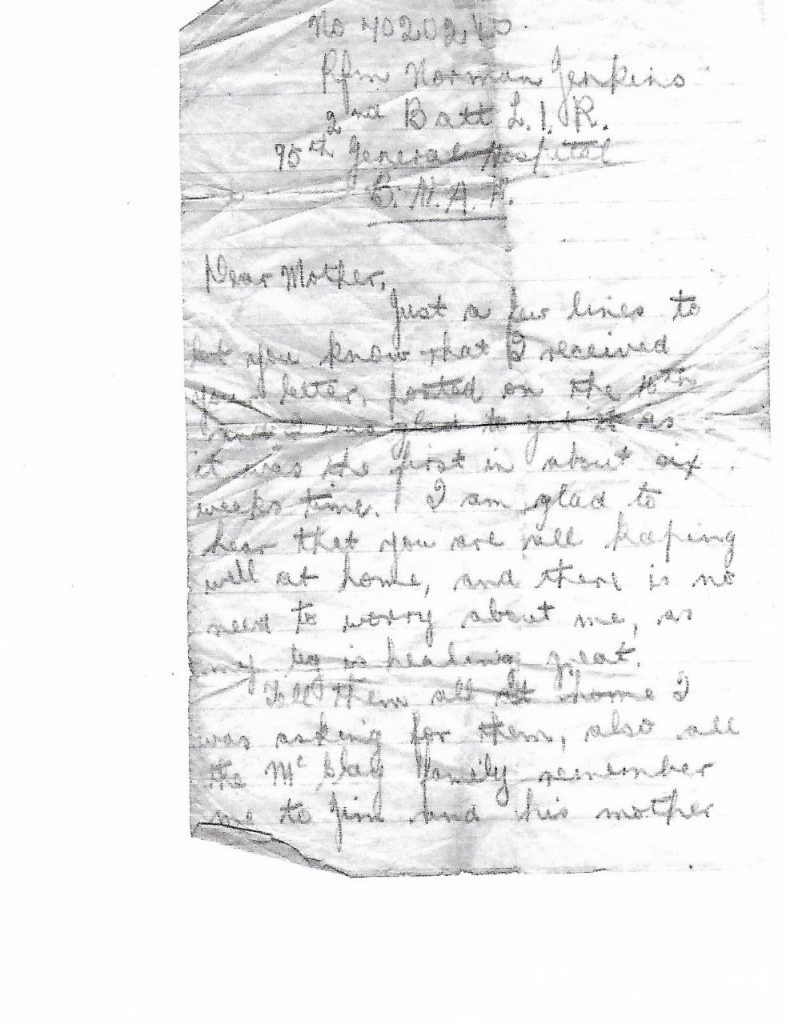
He was discharged from hospital on 2nd August 1943 and joined up with the 2 LIR again on 6th September 1943 in Sicily before they departed for the mainland of Italy. Sadly, my uncle would be killed exactly a month later during the battalion’s fighting defence of the Termoli perimeter .
I have been looking for information about William’s friend, John Wilson, for over ten years now and it was only recently that I had a breakthrough. I was searching through newspaper archives and found John mentioned in a Manchester newspaper dated November 1944. He seems to have come from Wythenshawe and was recorded as being with the LIR but for whatever reason the article stated he was said to be missing. There is also a picture of him in uniform.”
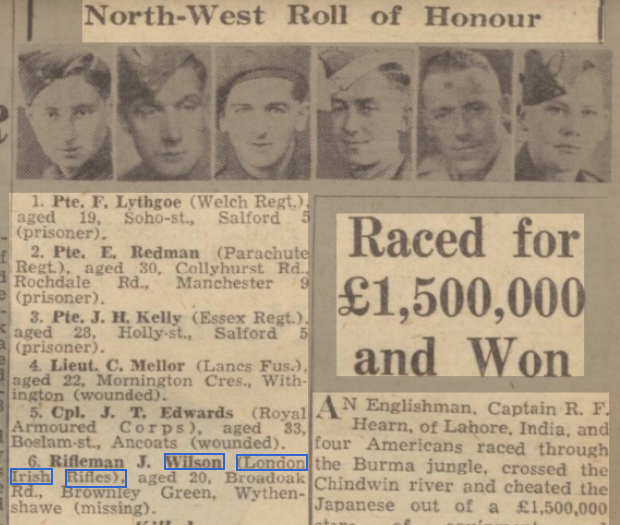
We are most grateful to David Jenkins for sharing his family’s story.
Quis Sepaabit
